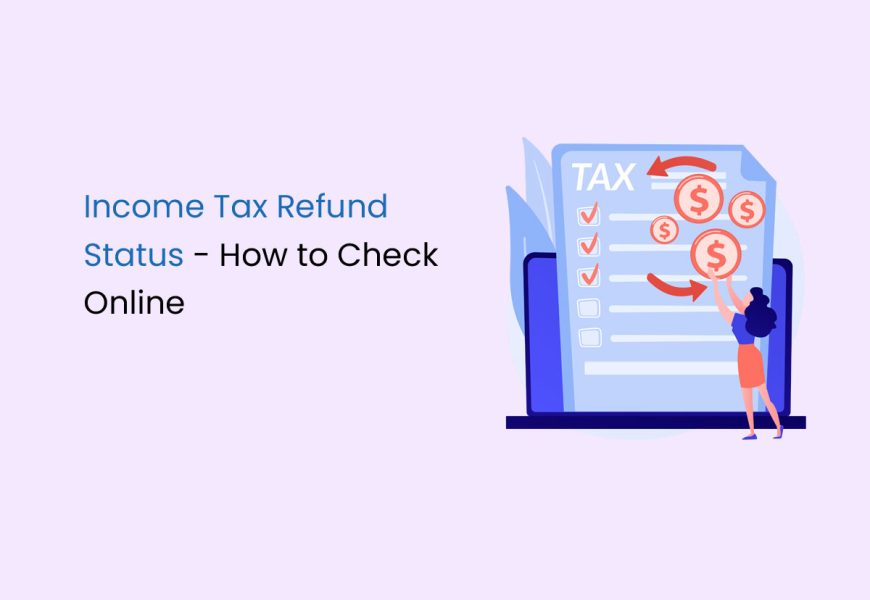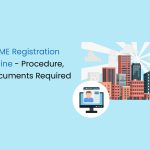Going through the intricacies of income tax returns can be a complex process, but staying informed about your refund status is crucial. The Income Tax Department provides a user-friendly online platform to track the progress of your income tax refund. You can effortlessly monitor your refund status by simply entering your PAN (Permanent Account Number) and the relevant Assessment Year. If you’ve paid more taxes than your actual liability, you have the option to request a refund for the excess amount.
This article will guide you on how to efficiently check and manage your income tax refund status, ensuring a seamless and transparent financial experience.
What is an Income Tax Refund?
An Income Tax Refund is the reimbursement a taxpayer receives from the government when they’ve paid more income tax in a specific financial year than their actual obligation. Essentially, it signifies the return of surplus tax paid to the tax authorities by the taxpayer. Various scenarios can lead to overpayment, such as excessive deductions, reductions in tax liability due to exemptions, deductions, or tax credits, and payments through methods like tax deductions at source (TDS), advance tax, or self-assessment tax.
Upon filing their income tax return, taxpayers undergo an assessment by the tax authorities to determine their actual tax liability based on declared income and deductions. If the assessed tax liability is lower than the amount paid, the excess tax is refunded to the taxpayer. It’s crucial to note that completing the e-filing process is a prerequisite for claiming your Income Tax Refund, ensuring a smooth and efficient reimbursement process.
How to Claim an Income Tax Refund?
Claiming an Income Tax Refund involves a straightforward process. Here’s a step-by-step guide to help you through the process:
- Ensure you file your Income Tax Return (ITR) for the relevant financial year, accurately disclosing all income and taxes paid information.
- Include all necessary details regarding your income, deductions, exemptions, and taxes paid. This information is crucial for the accurate assessment of your tax liability.
- Submit your ITR with the Income Tax Department, either online or offline.
- The Income Tax Department will process your ITR, verifying the information provided.
- If, during the assessment, it’s determined that you have paid more tax than your actual liability, the Income Tax Department will issue a refund.
- Once the refund is approved, it will be generated by the Income Tax Department.
- The refund amount will be either directly credited to the bank account linked with your PAN or a refund cheque will be sent to your registered address.
- Keep track of your income tax refund status through the Income Tax Department’s website. This can be done by entering your PAN and the relevant Assessment Year.
How to Check Income Tax Refund Status
Checking the status of your Income Tax Refund for the Financial Year 2022-23 (Assessment Year 2023-24) is a straightforward process, provided you have your PAN and assessment year details at hand. There are two primary methods to check your income tax refund status online: through the Income Tax E-filing Portal and the TIN NSDL Portal.
Here’s a step-by-step guide for each method:
How to Check Income Tax Refund Status Through E-Filing Website
- Head to the official Income Tax E-filing Portal.
- Use your User ID/PAN/Aadhar to log in to your account.
- Input the ‘Captcha code’ displayed on the screen for verification.
- Once logged in, go to the ‘My Account’ section.
- Click on the ‘Refund/Demand Status’ option.
- The status of your income tax refund will be displayed, including information such as Assessment Year, Status, Reason for Refund Failure, and Payment Mode.
How to Check Income Tax Refund Status through the TIN NSDL Website
- Go to the official TIN NSDL Portal.
- Provide your ‘PAN’, ‘Assessment Year’, and the displayed ‘Captcha’.
- After entering the required information, click on ‘Proceed’ to check the status of your refund.
Types of Income Tax Refund Status
Understanding the different types of Income Tax Refund Status is essential for taxpayers to stay informed about the processing of their returns. Here are explanations for various refund statuses:
- Not Determined: The income tax department has not processed your tax return because the refundable amount has not been determined.
- No e-filing for this assessment year: Indicates either non-filing of income tax return or manual filing for the assessment year.
- Refund Paid: This signifies that your income tax refund has been successfully transferred back to your bank account.
- ITR Proceeds determined and sent to Refund Banker: Denotes that your income tax refund has been processed, and the amount is ready to be transferred to your bank through the refund banker.
- Refund unpaid: This implies that the income tax department has not yet disbursed your refund.
- No Demand No Refund: Indicates that the tax amount deducted is accurate, and no refund or additional payment is owed.
- Demand Determined: This status implies that your request for a refund has been rejected, and the income tax department has determined that you need to pay more tax.
- Contact Jurisdictional Assessing Officer: The income tax department requires further clarification on details in your income tax return. It’s advisable to get in touch with the assessing officer.
- Rectification Proceeds, refund determined, sent out to refund banker: Denotes that your rectified income tax refund request has been accepted, and the amount is ready to be transferred to your bank through the refund banker.
- Rectification Proceeded on, No Demand No Refund: Your rectification request has been accepted, but there is neither a demand for additional tax payment nor a refund.
- Rectification proceeded, demand determined: Your rectified income tax refund request has been accepted, but it’s determined that you still need to pay more tax. Payment is required within 30 days of this notice.
Paying Income Tax Refund
You can pay your income tax through a debit or credit card. Here’s how:
Direct Credit of Income Tax Refund Amount
Income tax refunds are expedited through NECS/RTGS for immediate crediting. To ensure swift processing, provide comprehensive details about your bank account. Key information includes your communication address, bank account number, and the branch’s IFSC code. By furnishing these specifics, the transmission of income tax refunds becomes a seamless and efficient process.
Income Tax Refund via a Cheque
In situations where your bank account information is inaccurate or unclear, the income tax refund will be disbursed to you via a cheque. Maintaining accurate and clear bank account details is crucial to facilitate a smooth refund process. If discrepancies arise, a cheque payment to your bank account serves as an alternative method for refund disbursement. Ensure the accuracy of your banking information to avoid any delays or complications in receiving your income tax refund.
How to Request for Tax Refund Reissue
If you need to request a tax refund reissue, follow these step-by-step instructions:
- Step 1: Click on the link [Income Tax e-Filing Portal](https://portal.incometaxindiaefiling.gov.in/e-Filing/UserLogin/LoginHome.html).
- Step 2: Enter your User ID, Password, date of birth, and the captcha code to log in.
- Step 3: Navigate to ‘My Account’ and then click on ‘Service Request’.
- Step 4: Under ‘Request Type,’ click on ‘New Request’ and choose ‘Refund Reissue’ from the ‘Request Category’ options.
- Step 5: A screen will display the acknowledgement number for each financial year during which you filed your Income Tax.
- Step 6: Click on ‘Submit’ under the ‘Response’ section for the specific year you want the refund reissued.
- Step 7: Fill in the required details, such as your Bank Account Number, Account Type, IFSC Code, and Bank Name, and then click on ‘Submit’.
- Step 8: After submission, the refund amount will be processed and credited to your bank account in a few days.
FAQs about Income Tax Refund Status
How long does it take for an Income Tax Refund to be processed?
Typically, after filing and verifying your Income Tax Returns, the processing time for a refund is usually between 20-45 days.
If my Income Tax Refund is delayed, will I receive any compensation?
Yes, in case of a delayed refund, you are eligible for compensation in the form of 0.5% interest per month or part of the month on the due amount.
When do I become eligible for an Income Tax Refund?
You become eligible for an Income Tax Refund if you've paid more tax than the actual amount due. The refund is calculated during the filing of your Income Tax Returns.
What is the time limit for claiming an Income Tax Refund?
You can claim an Income Tax Refund only after filing your Income Tax Returns. The deadline for filing returns and claiming refunds for any Assessment Year is 31 December.
How long does it take for the Income Tax Refund to reflect in my account?
Typically, it takes 30-45 days for the Income Tax Refund to reflect in your bank account.
Can I check my Income Tax Refund status online?
Absolutely, you can check the status of your Income Tax Refund online through the designated portal.
What is the difference between an Income Tax Return and an Income Tax Refund?
An Income Tax Return provides information on your annual income and taxes, while an Income Tax Refund is the excess amount returned when you've paid more taxes than required.
Whom should I contact for Income Tax Refund queries?
For any Income Tax Refund-related queries, contact 1800-180-1961 or email refunds@incometax.gov.in.
Will I have to pay tax on the Income Tax Refund amount?
The Income Tax Refund itself is not taxable. However, the interest earned on the refund is subject to taxation.
Do I need to file taxes to receive an Income Tax Refund?
Yes, filing an Income Tax Return for the assessment year is necessary to claim an Income Tax Refund for any excess taxes paid.
Is there a limit to the number of times I can file revised returns?
You can file revised returns multiple times within the one-year expiry limit.





















